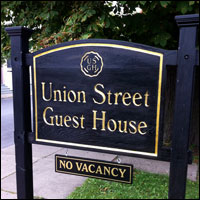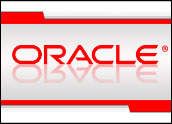
Few industries in this online era can lay claim to a longer or more venerable history than newspapers can — but today, it’s no secret that newspapers are in trouble.
The rise of the Internet has wrought changes to the competitive landscape that are drawing away both readers and advertisers, leaving newspapers in a struggle to survive. Traditional processes are being thrown out the window as these organizations try to find new, workable business models, and much of the focus appears to be falling onto an entity that hitherto had frequently been little more than an afterthought: the customer.
“As competition increases, I think the battle comes down to the fact that, all other things being equal, the newspaper that manages its customer relationships best wins,” Shaun Higgins, director of marketing and sales at The Spokesman-Review in Spokane, Wash., told CRM Buyer.
Time to Listen
Indeed, print media organizations are increasingly embracing customer relationship management (CRM) as a tool for survival. Where newspapers long trained all their energies on creating what they felt was the best product, now they are beginning to see that they must look to customers — both readers and advertisers — to tell them what that product should be.
“It used to be companies would simply tell the world what they have and, if you want one, here’s how to get one,” Mike Betzer, vice president of CRM strategy at Oracle, told CRM Buyer. “Today that’s changed, but newspapers, because they are a very old, established industry, are slower to make this curve.”
Newspapers today are often cash-strapped, understaffed and laden with paper-based processes and departmental silos, so the challenge is a daunting one.
“Newspapers are going through a tectonic shift right now as they look for ways to get away from a paper-based system to cut costs and get a 360-degree view of their customers,” Corinne Sklar, vice president of marketing with CRM vendor Bluewolf, told CRM Buyer.
Print vs. Online
There are three components of any CRM strategy: good information, good technology and good people, according to a 2002 report from the World Association of Newspapers. Implemented well, a good CRM strategy can bring myriad benefits, including long-term circulation stability through better customer retention and higher purchase frequency; higher advertising yields; demonstrable ROI (return on investment) on Internet investments; new product development opportunities; and better-informed decision making, the report asserts.
To realize benefits like those, most newspapers must undergo nothing short of a transformation, breaking down silo walls and enabling collaboration.
“Most newspapers have gone online now, but if you look inside the companies, you’ll often see them organized as two separate organizations — the online part and the print part,” Betzer explained. “The two sides are fighting for control.”
Silo Walls
Zeroing in even further, individual departments within many newspapers have traditionally viewed customers from a departmental perspective, without any kind of ability to view the entire relationship holistically.
Historically, “if a customer had a problem with their subscription, we would have them call the subscription department; if they had a problem with a classified ad, they would call that department,” Higgins explained. “Most systems won’t tell us that a person who just placed an ad also subscribes, or if they have written a letter to the editor, or if they have had any kind of problems with our services. We tend to departmentalize.”
As a step in the other direction, The Spokesman-Review has combined its circulation and classified phone boards so that if a customer calls in to change a subscription, stop delivery during a vacation or place a classified ad, for example, the staffer they talk to has access to information about their history on both sides of the newspaper. “Say the customer has had three bad delivery experiences,” Higgins said. “Now we can ask about it, or we can offer a special deal — we have the opportunity to up-sell while they’re on the phone.”
A similar opportunity exists on the advertising side, to allow a consolidated view of the relationship with an advertiser, Venecia Liu, a research director with Gartner, told CRM Buyer.
The result can be an overall understanding of details such as “who’s the sales rep, how many ads have they placed with us, where’s the location of the ads being placed, do they need support, etc.,” Liu explained.
Minimizing Complaints
Consumer complaints are another area The Spokesman-Review is focusing on. The industry standard acceptable level is two complaints per 1,000 contacts, but the Spokane paper is aiming to reduce that to 3 per 10,000. It’s not there yet, but “we want to make sure we don’t have to deal with customer dissatisfaction as part of CRM,” Higgins said.
Toward that end, the paper is studying personnel, training and compensation “to ensure we can get people who will result in fewer errors and dissatisfiers created in the first place,” he explained. “If you have fewer errors, you need fewer people to deal with errors and you can recover any extra costs — or maybe make more — by not having to have those extra people. We’re trying to find a way to get it right the first time by working hard on processes, training and scripts.”
Know Thy Customer
Perhaps the biggest component of CRM is learning what, exactly, your customers want. “It’s not enough to just ask the questions — you also have to listen to the answers,” Higgins asserts. “Nobody just wants to buy ads — they want to sell stuff,” for example. “Part of CRM is not trying to argue with customers about the wisdom of their business plans. Instead, we need to figure what we can do to help them achieve their plans, and that’s a matter of good data gathering and storage along with good analytical tools,” he said.
Questionnaires are one way to learn more about customers; simply being observant and noticing details is another. One Spokesman-Review ad client, for example, has an office decorated with Native American artifacts — remembering that interest for possible use later can further the relationship. “You must be interested in them and know what moves them,” Higgins says.
Another way to serve readers is by recognizing their limitations. For example: An industry trend is driving many papers to decrease the size of classified ads, with proportionately smaller font sizes, as a way to maximize revenue in that high-margin department, Higgins noted. Yet newspaper audiences are aging, which can lead to problems reading the ever-tinier ads. As a result, The Spokesman-Review has chosen to buck the trend and keep its classified ads at a larger size.
“The ultimate question is, what serves the reader?” Higgins explained. “It’s not smaller type — we want them to be able to read those ads.”
New Ways to Serve
On the online side, the more advanced major newspapers are enabling consumers to build a profile with information on what type of content they’re interested in, Oracle’s Betzer noted. “It’s about putting the consumer in charge of what they want to do and read.”
Indeed, a good understanding of consumer interests can even lead to spin-off products or publications aimed at niche markets or specific sets of interests, Gartner’s Liu added. Launching blogs and social communities can also create interaction and a sense of belonging, she said — both of which can help retention.
Repurposing content for mobile, handheld platforms is another strategy being used to serve customers better while also learning more about the contexts in which they use a newspaper’s content, she pointed out.
Trusted Brands
In all CRM efforts, it’s important to remember that the strategy is both an art and a science, Higgins cautioned. “CRM isn’t just a matter of processes and systems. It’s also a matter of putting those to the service of good salesmanship.”
Within the organization, too, recognizing the human factors is critical. Communication, executive sponsorship and careful change management are all essential to help overcome employee resistance and realize the benefits of CRM, Bluewolf’s Sklar added.
There’s no doubt those benefits are well-worth the effort. “Newspapers are the trusted source — people love the brand of a New York Times, a Wall Street Journal, a USA Today,” Betzer said. “Companies work their whole lives to get that brand recognition, and newspapers already have it. Now they just have to leverage what they’ve got.”






















































